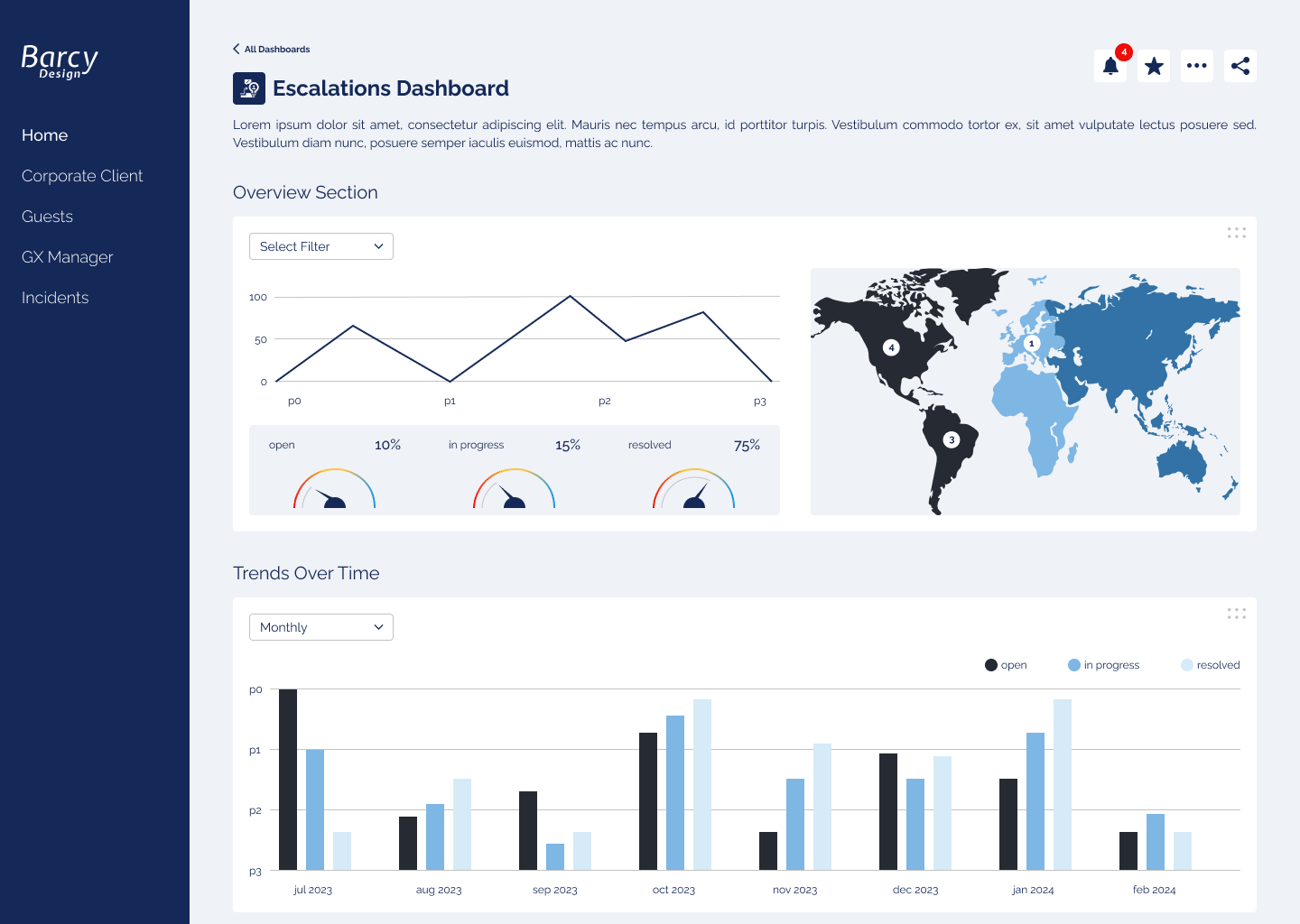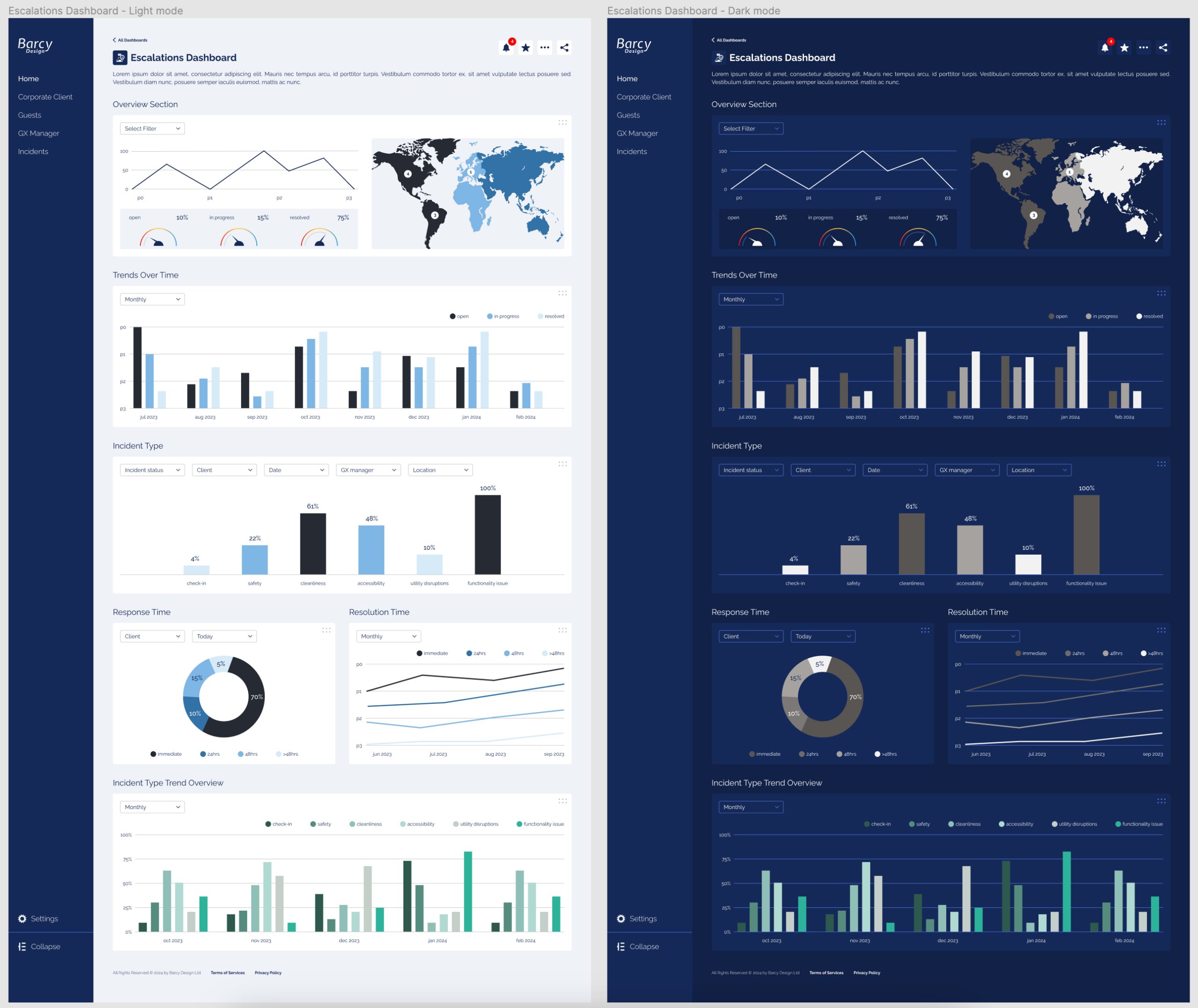Escalations Dashboard
🎯 The Challenge
In the fast-paced world of incident management and performance monitoring, stakeholders need real-time insights to address service interruptions and manage resources efficiently. The client required a custom dashboard that would provide key performance metrics, track incidents, and enhance collaboration across internal and third-party teams. The challenge was to design a dashboard that was intuitive, clear, and actionable.
🧠 The Goal
- Streamline incident management by visualizing key metrics like response time, resolution time, incident severity, and assigned responsibilities
- Provide a user-friendly interface for monitoring performance across teams
- Align with company’s corporate identity, ensuring brand consistency while enhancing usability
- Enable quick access to critical incident information to reduce response time
💼 My Role
As the lead designer, I was responsible for every aspect of the dashboard, from research to the final user interface. I collaborated closely with product stakeholders to understand business needs and technical requirements, ensuring the design was both functional and aligned with the client’s branding.
📊 Market Research & Benchmarking
I kicked off the project with a market analysis and competitor benchmarking to understand best practices in incident management tools. This helped identify:
- Essential features that increase operational efficiency
- Effective ways to display performance metrics
- Visual hierarchies that allow users to focus on key priorities
I presented the findings to the client to ensure alignment on the core elements before diving into the design process.
🎨 UI Design & Prototyping
Starting with rough sketches, I iterated on different dashboard layouts that would offer easy navigation and data visualization. Once I had feedback from internal stakeholders, I created interactive prototypes in Figma. Key design elements included:
- Clear visual hierarchies to prioritize key metrics (response time, resolution time, etc.)
- Flexible components that could be customized for different user roles
- Simple, intuitive charts and graphs to communicate complex data at a glance
My goal was to ensure that users could quickly take action on the most important incidents while having a high-level overview of ongoing performance.


🔑 Key Features
- Real-time data visualization for incident tracking
- Customizable widgets for different user needs and preferences
- Clear status indicators to highlight priority actions
- Consistency with brand identity through color, typography, and logo usage
📈 Impact
- Improved response time through better data visualization and streamlined navigation
- Enhanced team coordination with easy-to-read performance metrics
- Faster incident resolution by providing relevant data upfront for decision-making